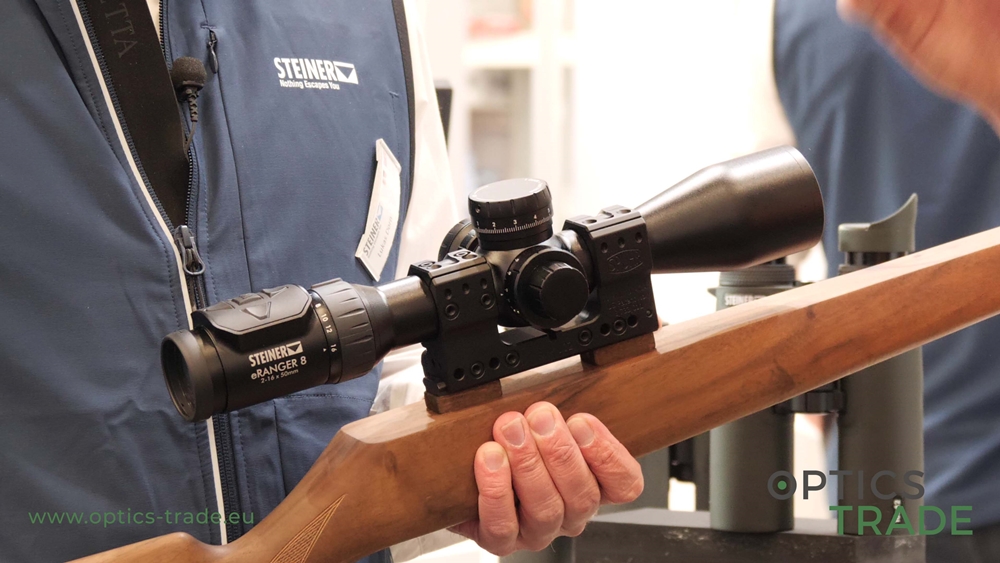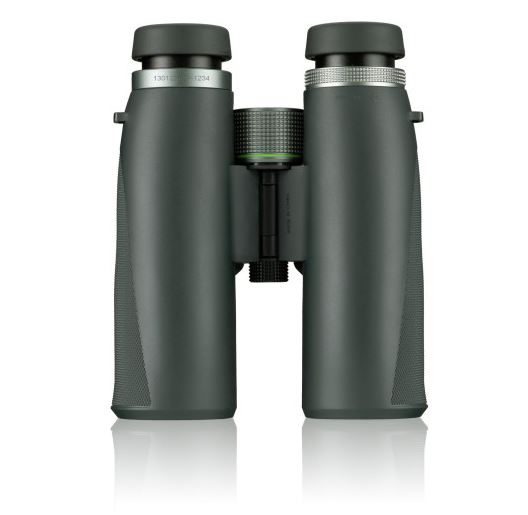Introduction of Sig Sauer KILO 3000 BDX
Last year, Sig Sauer revolutionized the sport optics industry by integrating the BDX (Ballistic Data Exchange) technology into some of their LRF monoculars and riflescopes – and Sig Sauer KILO3000BDX was born. This is how it works – first, the spotter ranges the target with a KILOBDX rangefinder. The distance is displayed on the monocular’s display and transferred to the SIERRA3BDX riflescope that the rangefinder is connected to via Bluetooth. An illuminated holdover dot appears on the riflescope’s reticle; the shooter aligns the dot with the target and pulls the trigger.
Interested in Sig Sauer KILO 3000 BDX?

Features of Sig Sauer KILO 3000 BDX
Now, in 2019, Sig Sauer has implemented BDX technology into their first-ever laser rangefinding binoculars called KILO3000BDX. Sig Sauer promises 5000 yards (4572 meters) on highly reflective objects for these binoculars. The binoculars allow the user to choose whether the distance displayed is in yards or meters. I chose the latter and put them to the test on hilly, wooded terrain not far from the headquarters of our company. The longest distance that I got was 2860 meters – no object was reflective enough for the rangefinder to display a higher number. Perhaps the reason for that was in the atmospheric conditions which were not optimal for ranging. Nonetheless, I was amazed that the binoculars had no problems measuring distances to trees 2100 meters away. I didn’t have the opportunity to range animals at a similar distance, but Sig Sauer claims that KILO3000BDX will provide a distance to a deer-sized animal at 1500 yards (1372 meters). At 879 g, these are not too heavy for an LRF-binocular. For now, only one configuration is available – 10×42. This configuration tends to be the most popular with rangefinder binocular users, hence most optics manufacturers go for it.



The biggest surprise for me was the swiftness of the ranging process and the Scan mode. When you hold the ‘range’ button, the distance to the observed object updates four times per second. This feature is great for tracking moving animals. The technology that aids in speedy measuring is called LightWave DSP™. When ranging up to 1000 meters, the distance is displayed in decimal numbers. The user can choose Best or Last mode in the menu based on whether the terrain is sparsely or lushly vegetated. The binoculars are powered by a CR2 battery, the compartment for which can be found on the bottom. KILO3000BDX is equipped with the equivalent horizontal range function which they call AMR (Angle Modified Range) – it works like a charm.
Missing the battery?


In the introduction, I already mentioned that the device is powered by Sig Sauer‘s BDX technology. You simply download an app to your Android/iOS phone and create your ballistic profile. Based on the data inserted, the binoculars will first display the distance and then the amount of MOA/MIL needed for POI adjustment. If you also have a BDX riflescope connected to the binoculars via Bluetooth, the data is transferred from the binoculars to the riflescope – a holdover dot is displayed on the riflescope’s reticle. The BDX system runs on Applied Ballistics Ultralite software which allows ranging up to 800 yards and promises 1 MOA of accuracy. Sig Sauer came up with a solution for those who shoot farther than that. The 3000BDX features an upgraded form of software called Applied Ballistics External, allowing it to be paired with a Kestrel that runs on AB-Elite software. Once paired, the user can range as far as it is possible with the 3000BDX and Kestrel will provide a ballistic solution in MOA/MIL.

Sig Sauer KILO 3000 BDX review
I filmed a detailed review of Sig Sauer KILO 3000 BDX and ran through some major features. In the end, I talked about the things that really impressed me and features that could be improved, especially the bulkiness of these rangefinder binoculars. Watch below.

LRF binoculars tend to be optically less efficient in the dusk because of the integrated laser system. Sig Sauer tries to solve this problem with SpectraCoat anti-reflection which improves the light transmission rate and optical clarity. Having too strongly or too weekly illuminated display is no longer a problem – with Lumatic, Sig Sauer ensures that the intensity of the illuminated display is in line with the ambient lighting. I had no problems with the focusing, being able to nicely focus the image even at extremely long distances.
Looking for the right rangefinder binoculars?


Binoculars are a joy to hold. The aluminum housing is rubberized all over, providing additional protection of the interior and ensuring that the user has a firm grip. There are two buttons on the top, one is used for ranging and the other for changing the settings. The binocular is of the single-hinge type and allows the interpupillary distance to be set from 57 to 73 mm. Eyecups are rubberized and can be fixed in four positions. They can be comfortably pressed against the eyes. The colour is a mixture of green and grey, and from the details on the surface of the housing, you can tell that this is a Sig Sauer design. The focusing button can be easily accessed with the index or middle finger. The binoculars can be mounted on a tripod thanks to the capped thread in between the objective lenses. The outer appearance is somewhat similar to Vortex Fury and Kahles Helia because of the two bulbs on the bottom. The dioptre can be found on both oculars. There are no indicators as to where the binoculars are produced but based on the similarity to some other models our guess would be that they are manufactured somewhere in Asia.


Conclusion on Sig Sauer KILO 3000 BDX
In overall, I was satisfied with the test – KILO3000BDX is a promising innovative binocular. With a price tag of around 1500 €, it will compete against Kahles Helia RF, Vortex Fury, Meopta Meorange and some other LRF-binoculars in this price class. With a wide array of useful functions, these should be a big seller. In my opinion, the strongest point is the ballistic calculator which no other binoculars in this price class offer. You can greatly benefit from the BDX system if you own a smartphone (and a SIERRA3BDX riflescope). The app is fun to play with and intuitive to use. Also, the swiftness of the Scan mode is extraordinary – it is the fastest I’ve seen up to now. Sig Sauer grants lifetime warranty on the material and 5 years on electronics.

Picture Gallery










